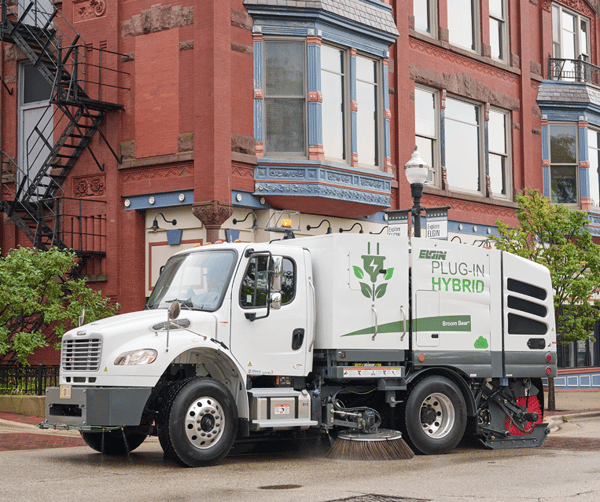Published on November, 07 2023
Street sweeping is a best practice for removing pollutants before they enter stormwater.
When it comes to street sweeping, it’s easy to think about the street sweepers’ ability to clear roadways and clean up the community. What is just as crucial but often forgotten is the street sweeper’s impact on stormwater.
Pollutants, in the form of particulate matter, accumulate on streets and parking lots. Particulate matter (PM) or microscopic pollution smaller than a human hair is emitted from various sources, but most recognizably from the exhaust, brakes, and other systems of automobiles traveling the streets. When it rains all those pollutants are swept into storm drains which carry the polluted stormwater to catch basins and waterways in the community.
That makes effective street sweeping essential to removing and minimizing the pollutants in stormwater. In fact, street sweeping is a best practice for pollution prevention and removal of pollutants before they enter the stormwater system.
So how can you maximize your municipal’s street sweeping program to improve stormwater runoff?
- Consider timing. When is as important as how you’re sweeping. For colder climates, street sweeping during spring snowmelt helps reduce sand, grit, and other materials from stormwater. Likewise, communities with abundant rain or rainy seasons should consider sweeping prior to these events to help decrease stormwater pollutants. Sweeping often will help remove pollutants before they enter the water.
- Think about where to sweep. Schedule street sweeping near areas of concern where stormwater runoff is likely to accumulate. Likewise, catch basin cleaning can be used as a last resort to catch pollutants prior to entering stormwater.
- Know about disposal. A roll-off container can help keep pollutants from contaminating stormwater. Likewise, a dump truck can eliminate ground dumping.
- Utilize the right sweeper. Pavement types differ, so utilizing the right sweeper will help increase the success of stormwater management. For example, porous pavement allows water to pass through it essentially allowing the water to go directly back to the soil and eliminating runoff. For porous pavement, a high-powered, pure vacuum sweeper with a nozzle works for cleaning.
With a variety of sweepers for multiple applications, Elgin can provide a sweeper that helps your municipality improve stormwater quality. Elgin has an extensive, well-established dealer network for support, and its long history of innovating street sweepers means the team knows how to customize sweepers for your needs. If you’re interested in an Elgin sweeper, complete this form for more information.

